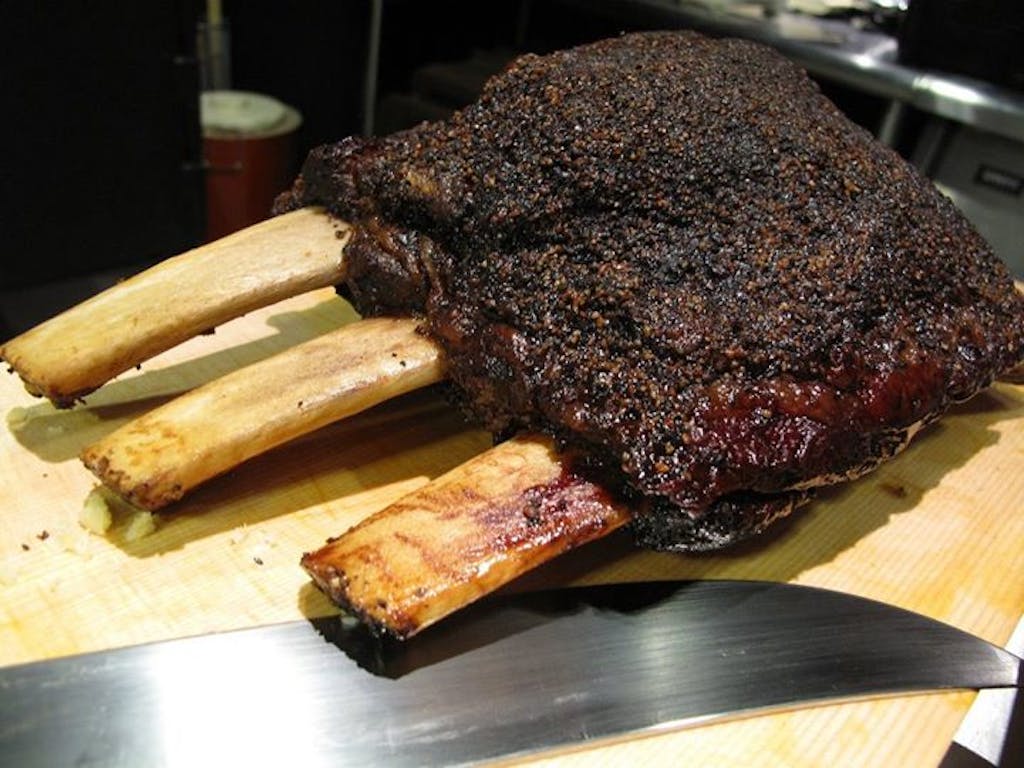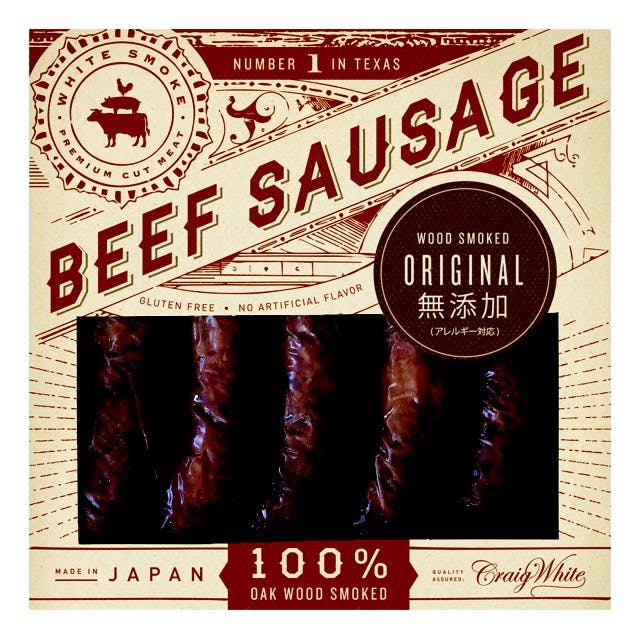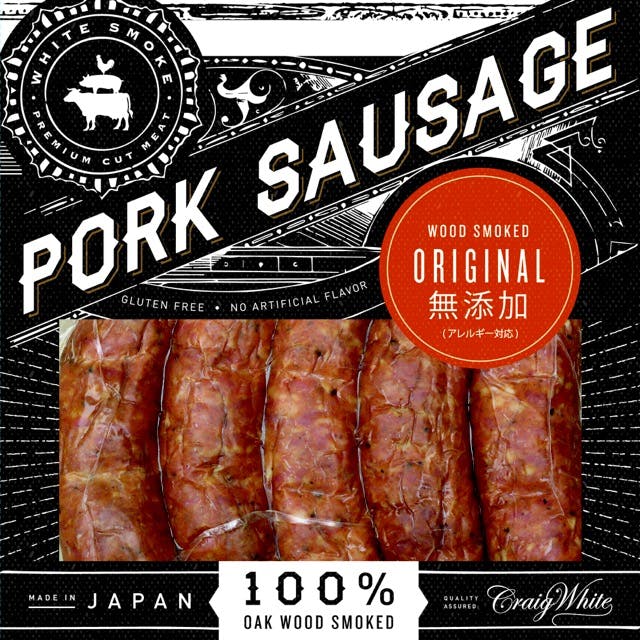TMBBQ welcomes guest writer Megan Giller who takes us to Japan for some Texas barbecue.

Craig White is a Texan. He’s a pitmaster and an expert in smoked meats, and like many of his breed he can be secretive. White designed his own proprietary smoker that he won’t even let you photograph. But here’s the catch: He’s in Tokyo.
After cutting his teeth at Louie Mueller Barbecue in Taylor and City Market in Luling, White, a mechanical engineer by trade, moved to Japan in 2011 and opened a barbecue restaurant called White Smoke. At first the Japanese weren’t so sure about the whole brisket and ribs thing. But eventually the high-end Texas barbecue spot won over Tokyo. After a fire destroyed the restaurant, White changed his approach, packaging his smoked meats and selling them across the country: Japanese diners now dig in to his ribs, sausage, turkey and more at high-end restaurants across the city and even buy them at (gasp!) Costco.
We sat down with the Harvard-educated food entrepreneur to hear more about how Texas barbecue has captured the Eastern palate.
Megan Giller: Why Japan?
Craig White: I grew up in San Antonio, and I used to love going to City Market in Luling. I’ve lived in Japan for at least three months about eight different times in my life, and after I’d come home to Texas, I’d bring a suitcase of barbecue back with me. I started to have more and more friends back in Japan who wanted some of that suitcase full of meat. I thought there was an opportunity to do something truly authentic with barbecue here.
MG: What kind of barbecue do you sell?
CW: Our main items right now are beef ribs, pork sausage, beef sausage, chicken wings, and bacon. We also do smoked turkey.
MG: Is your barbecue really Texas barbecue, or have you had to make a lot of changes for the Japanese palate?
CW: Most foreign foods are watered down for the local environment. We have not done that. We are probably as authentic or more authentic than most of the stuff you’d find from people who are not using 100 percent wood smokers. If you go to Franklin or Louie Mueller or another restaurant of that high caliber, you’ll find wood smokers. But as you know, the vast majority of barbecue in the country, maybe even parts of Texas, isn’t done with wood. They use gas or electric smokers. The meat itself is authentically produced. Our official name is The Better Table, but our label name is White Smoke: a Texas Smokehouse. We have five principles:
- Being a Texas smokehouse, beef is king.
- Everything we do is 100 percent wood.
- We focus mostly on dry rubs, and we don’t use sauces. I don’t work for Heinz. If we’re always using a sauce, it all tastes the same. Brisket isn’t the same as a beef rib.
- We cook low and slow.
- We are 100 percent chemical-additive and preservative-free.
Even though it’s technically barbecue, what we sell is American culture.
MG: Is it for expats or Japanese people?
CW: The restaurant started off 80 to 90 percent foreigners: Americans, Germans, Italians, Australians. Mark Zuckerberg rented out our restaurant to end his year of being a vegetarian. When I closed the restaurant, we were completely booked out for three to four months with 80 percent Japanese customers. I wanted it to be for Japanese people. Japanese food, like American food, is evolving. But the Japanese palate is sensitive. They typically cannot handle extremely spicy things. I love brisket, but we don’t do brisket. For the Japanese taste, brisket is a hard thing for them to wrap their minds around. I did most of my training at Louie Mueller, and Wayne Mueller is a good friend. He’s coming over as an ambassador of American food. I’m the first in-residence ambassador for food in Japan. As part of that, they’ve launched a program to introduce Japanese people to American food based on barbecue. We’re taking a tour across Japan. [Editors note: That tour has taken place as part of Wayne Mueller’s world tour. You can read more about it on TMBBQ and in a recent article in the Houston Chronicle].
MG: Where do you sell your barbecue?
CW: A lot of Japanese restaurants carry it, like the restaurant chain Operation Factory. They developed an entire concept to sell our meat for this coming summer, as a barbecue place outdoors. It’s almost like a pop-up store. There’s another place called Two Rooms that exclusively features our bacon. Our main customer here is Costco. We are also a supplier for Toyota’s restaurants. Their favorite items are our beef ribs and beef sausage, and they just started taking smoked chicken and pork ribs. We’re on Amazon Japan. We’re about to be picked up by Japan’s largest grocery store chain, Aeon, and a couple of high-end department stores like Takashimaya. Takashimaya sells our whole beef ribs.
MG: What kind of meat do you use?
CW: We start from the point of highest quality that we can find. All of our beef sausage is made with beef imported from a farm in Minnesota. For our pork, we work with a company called Sunterra out of Canada. There’s another organic maker in Iowa that we’ll start working with soon. We’re very specific about what the animals are eating, how they’re processed, and how we’re getting the meat. Hormone-free, organic meat usually creates a better product. In Japan, I’m surrounded by the highest-quality meat. We compete on quality. For example, if you take a piece of grass-fed brisket and smoke it the same way you would smoke a hormone-laden brisket, it’s not even going to be close. They will taste, feel, and smell like different products.
MG: Tell us about this proprietary smoker.
CW: I have a background in the automotive industry, and I used to design engines. I think of a smoker as being a large engine. I designed the smoker myself and had it made by a custom builder. It’s probably one of the largest smokers of its type that I’ve ever seen. Factory production requires a different level of control. Everything has to be inside. We have to control the air that comes in: It has to be filtered, and we have to make sure we have a certain filtering of the air that comes out. We have to maintain a certain even temperature throughout. On the outside it will look like your typical offset smoker, except for the size. We probably put a ton of beef ribs in there at a time.
MG: Do you have plans to expand?
CW: We’re in the middle of designing a new smoker to take it to twice the capacity. For the location we’re at, we will never have enough capacity. We’re trailblazing and building a new market. The success of the category in this country is still a question mark. But since we’ve opened there have been a number of poorly run copycats. The most popular one is called Smokehouse. If you look at their logo versus our logo, you’ll notice something similar. Of course, our beef and sausage packs were designed by someone in Austin, Make and Matter. To get an authentic Texas design, you have to get a Texan to design it.










